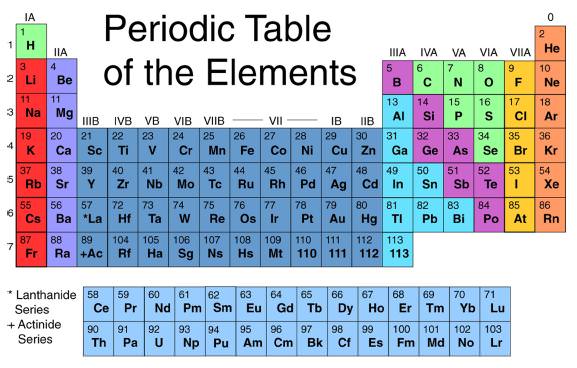[/caption]
The name itself conjures up imagines of mini nukes and sophisticated space-age gadgets doesn’t it? Well for some people it does. For others, Plutonium (Pu, atomic number of 94 on the periodic table of elements) spawns images of nuclear reactors, atomic energy and nuclear waste. All of these are true to an extent, but the reality behind this radioactive element is understandably more complex. For starters, plutonium is a silvery white actinide metal that is radioactive, and hence quite dangerous when exposed to living tissue. It is one of the key ingredients in the making of atomic weapons, but is also produced in nuclear reactors as a result of slow fission. There are also several isotopes of the element, but for our purposes, the most important is Plutonium-239, a fissile isotope that is used for both nuclear power and weapons and has a half-life of 24,100 years.
Plutonium-238 was first discovered as an element on Dec.14th1940, and then chemically identified on February 23rd 1941through the deuteron bombardment of Uranium in a cyclotron by Glenn T. Seaborg and his team of scientists, working out of the University of California in Berkley. The team submitted a paper publishing their findings; however, this paper was retracted when it became clear that Plutonium-239 was a fissile material that could be useful in the construction of an atomic weapon. At this time, the US was deep into the development of an atomic bomb (aka. the Manhattan Project) because it was believed that Germany was doing the same. For this reason, publication of Seaborg’s work was delayed until 1946, a year after the Second World War ended and security surrounding atomic research was no longer a concern. Seaborg decided to name the element after Pluto because of the recent discovery of element 93, Neptunium, and felt that element 94 should accordingly be named after the next planet in the Solar System.
Towards the end of WWII, two nuclear reactors were created which would produce the plutonium used in the construction of “Trinity”, “Fat Man” and other atomic weapons. These were the X-10 Graphite Reactor facility in Oak Ridge (which later became the Oak Ridge National Laboratory) and the Hanford B reactor (built in 1943 and 45 respectively). Large stockpiles were subsequently built up by the US and USSR during the Cold War, and have since become the focus of nuclear proliferation treaty concerns. Today, it is estimated that several tonnes of plutonium isotopes exist in our biosphere, the result of atomic testing during the 1950’s and 60’s.
We have written many articles about Plutonium for Universe Today. Here’s an article about Plutonium shortage in NASA, and here’s an article about Plutonium – 238.
If you’d like more info on Plutonium, check out Wikipedia – Plutonium, and here’s a link to World Nuclear page about Plutonium.
We’ve also recorded an entire episode of Astronomy Cast all about Nuclear Forces. Listen here, Episode 105: The Strong and Weak Nuclear Forces.
Sources:
http://en.wikipedia.org/wiki/Plutonium
http://www.world-nuclear.org/info/inf15.html
http://periodic.lanl.gov/elements/94.html
http://en.wikipedia.org/wiki/Nuclear_proliferation
http://en.wikipedia.org/wiki/Actinide
http://en.wikipedia.org/wiki/Cyclotron

